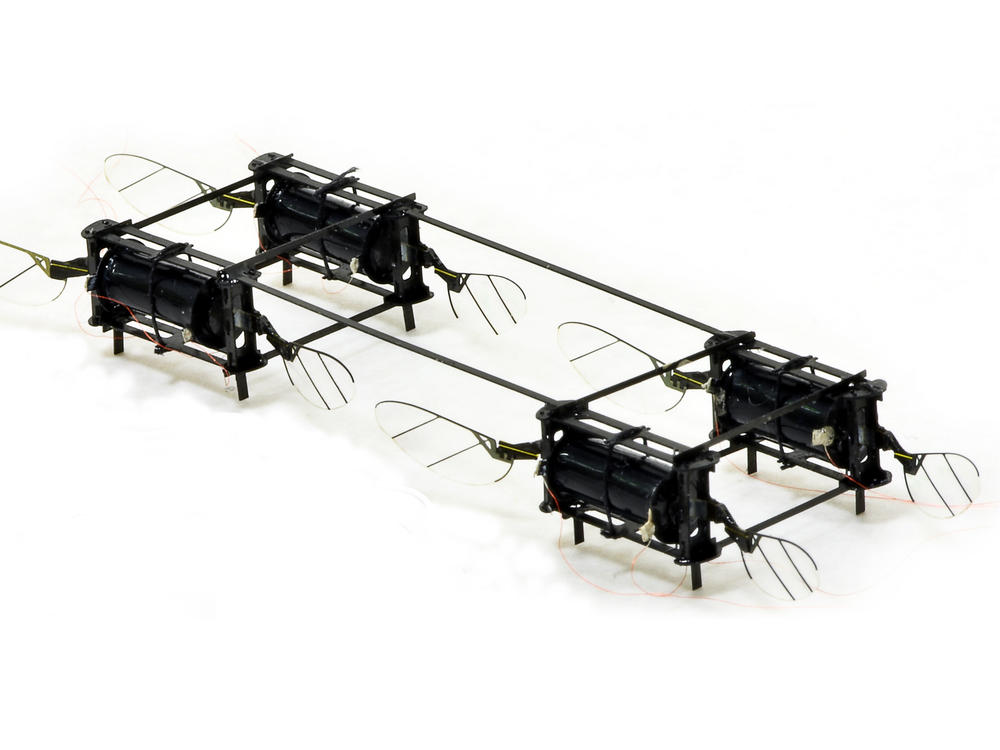Section Branding
Header Content
Don't Swat This Bug. It Might Be A Robot On A Rescue Mission
Primary Content
The reason it's so hard to kill a mosquito is that they move really well.
Scientists are trying to build a robot with that kind of agility. And these tiny but mighty flying robots could be used in life-and-death situations, such as finding people in a collapsed building.
Kevin Chen says he spends "a lot of time looking at the flapping-wing physics, that is understanding how an insect can flap their wings and generate lift and drag forces."
Chen, an assistant professor at the Massachusetts Institute of Technology, leads a team that's invented a new microdrone — not quite as tiny as a mosquito.
"The weight of this robot and the physical size looks pretty much like a dragonfly," he says.
The tiny drone weighs just 0.6 grams (or 0.02 ounces) — about as much as a paper clip. But like a dragonfly, it's resilient.
It has a soft, muscular mechanism called an "actuator" that powers the wings for flight, that can flap nearly 500 times per second.
Previously, tiny robots used rigid actuators built from ceramic materials. "The robot will crash and land," Chen says. "Or it may run into a ceiling or it can run into a wall. The rigid robots have a very hard time dealing with those collisions."
But the new version uses actuators made of thin rubber cylinders coated in carbon nanotubes. When voltage is applied to the nanotubes, an MIT news release explains, "they produce an electrostatic force that squeezes and elongates the rubber cylinder. Repeated elongation and contraction causes the drone's wings to beat — fast."
Chen says that "because our soft power robot is very robust, of course, we can do interesting maneuvers, such as doing a somersault, we can survive collisions, et cetera."
He envisions a time when his drone could be used as a search and rescue robot — to find survivors in disaster debris that bigger drones couldn't reach. For example, in a building collapse with people trapped inside.
"How do we do a search and rescue task to figure where are the people being trapped under the building?" Chen says.
Enter the insect-sized drone.
"Hopefully they can see the person now who was trapped inside and then collectively send the information back. So we have a good idea about where the person is trapped," Chen says.
But the drones could have other potential uses. Chen sees them artificially pollinating crops or carrying small cameras to inspect turbine engines. Big jobs, with tiny mechanical workers to carry them out.
Copyright 2021 NPR. To see more, visit https://www.npr.org.

